Ford Puma vs Tesla Model Y - Differences and prices compared
Costs and Efficiency:
Looking at overall running costs, both models reveal some interesting differences in everyday economy.
Ford Puma has a clearly perceptible advantage in terms of price – it starts at 24800 £, while the Tesla Model Y costs 34300 £. That’s a price difference of around 9506 £.
In terms of energy consumption, the advantage goes to the : with per 100 km, it’s more efficient than the with . That’s a difference of about .
As for range, the Tesla Model Y performs distinct better – achieving up to 622 km, about 246 km more than the Ford Puma.
Engine and Performance:
Power, torque and acceleration say a lot about how a car feels on the road. This is where you see which model delivers more driving dynamics.
When it comes to engine power, the Tesla Model Y has a decisively edge – offering 627 HP compared to 168 HP. That’s roughly 459 HP more horsepower.
In acceleration from 0 to 100 km/h, the Tesla Model Y is convincingly quicker – completing the sprint in 3.50 s, while the Ford Puma takes 7.40 s. That’s about 3.90 s faster.
In terms of top speed, the Tesla Model Y performs somewhat better – reaching 250 km/h, while the Ford Puma tops out at 210 km/h. The difference is around 40 km/h.
There’s also a difference in torque: Tesla Model Y pulls convincingly stronger with 493 Nm compared to 290 Nm. That’s about 203 Nm difference.
Space and Everyday Use:
Beyond pure performance, interior space and usability matter most in daily life. This is where you see which car is more practical and versatile.
Seats: offers more seating capacity – vs .
In curb weight, Ford Puma is convincingly lighter – 1316 kg compared to 1976 kg. The difference is around 660 kg.
In terms of boot space, the Tesla Model Y offers distinct more room – 822 L compared to 523 L. That’s a difference of about 299 L.
In maximum load capacity, the Tesla Model Y performs distinct better – up to 2138 L, which is about 855 L more than the Ford Puma.
When it comes to payload, Tesla Model Y slight takes the win – 472 kg compared to 469 kg. That’s a difference of about 3 kg.
Who comes out on top?
Overall, the Tesla Model Y shows itself to be wins the duel decisively and secures the title of DriveDuel Champion.
It convinces with the more balanced overall package and proves to be the more versatile choice for everyday use.
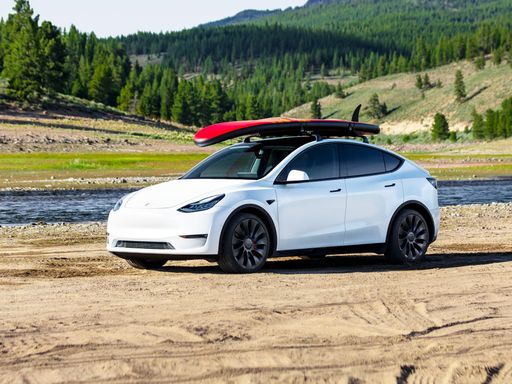 @ Tesla, Inc.
@ Tesla, Inc.
Tesla Model Y
Costs and Consumption
View detailed analysis
Engine and Performance
View detailed analysis
Dimensions and Body
View detailed analysis
Ford Puma
The Ford Puma is a cheeky compact crossover that blends sporty styling with city-friendly practicality, giving drivers a surprisingly fun and composed ride. With clever storage tricks and a lively personality, it’s a smart pick for buyers who want enjoyment without fuss.
details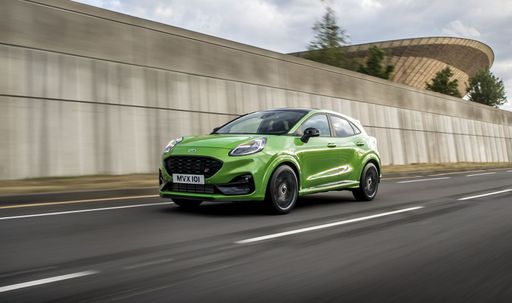 @ Ford Motor Company / Ford Media Center
@ Ford Motor Company / Ford Media Center
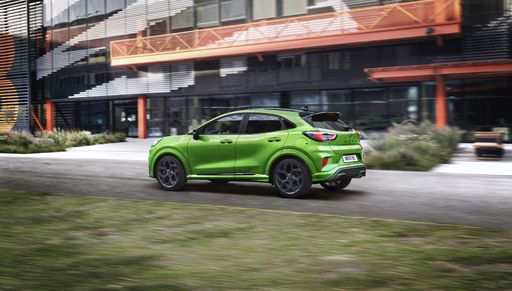 @ Ford Motor Company / Ford Media Center
@ Ford Motor Company / Ford Media Center
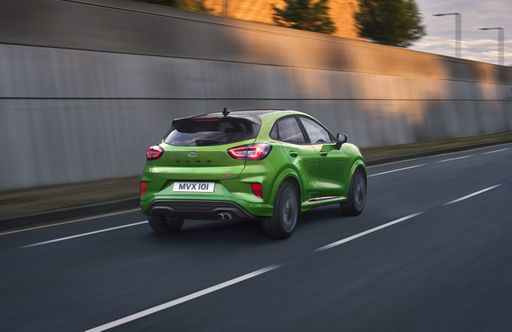 @ Ford Motor Company / Ford Media Center
@ Ford Motor Company / Ford Media Center
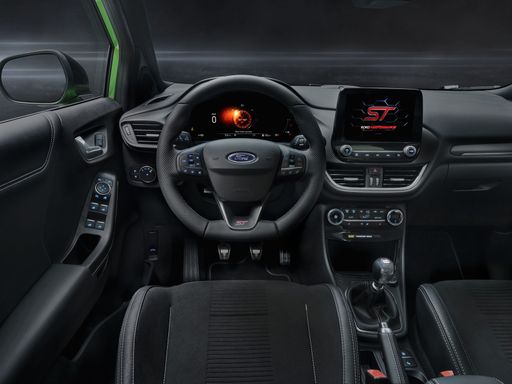 @ Ford Motor Company / Ford Media Center
@ Ford Motor Company / Ford Media Center
Tesla Model Y
The Tesla Model Y blends SUV practicality with sports-car poke, wrapping a roomy, minimalist cabin and handy hatch into a slick, aerodynamic package that feels more Silicon Valley gadget than garage ornament. It’s an ideal pick for buyers who want effortless electric driving, regular software improvements and access to Tesla’s convenient charging network, though style-conscious shoppers should know it’s more about tech and efficiency than classic luxury.
details @ Tesla, Inc.
@ Tesla, Inc.
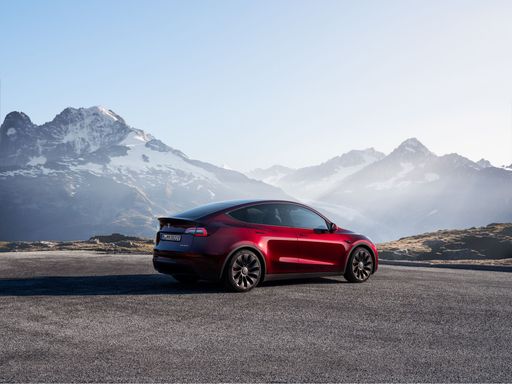 @ Tesla, Inc.
@ Tesla, Inc.
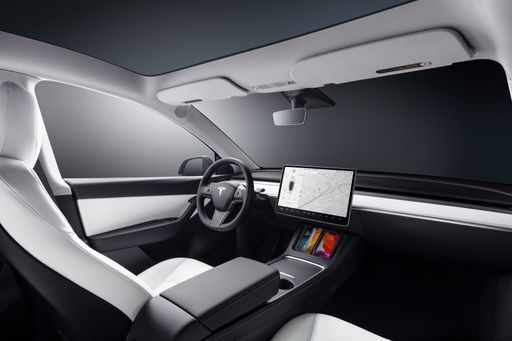 @ Tesla, Inc.
@ Tesla, Inc.
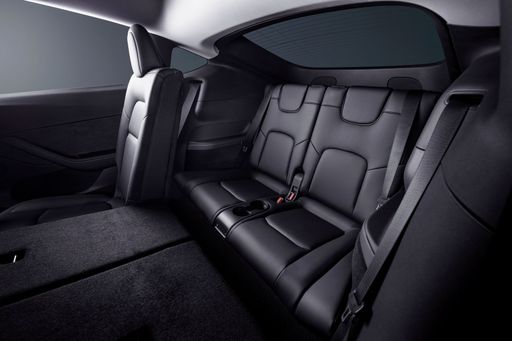 @ Tesla, Inc.
@ Tesla, Inc.
 @ Ford Motor Company / Ford Media Center
@ Ford Motor Company / Ford Media Center
|
 @ Tesla, Inc.
@ Tesla, Inc.
|
|
|
|
Costs and Consumption |
|
|---|---|
|
Price
24800 - 36300 £
|
Price
34300 - 53100 £
|
|
Consumption L/100km
5.4 - 5.9 L
|
Consumption L/100km
-
|
|
Consumption kWh/100km
13.1 - 13.9 kWh
|
Consumption kWh/100km
13.1 - 16.2 kWh
|
|
Electric Range
361 - 376 km
|
Electric Range
534 - 622 km
|
|
Battery Capacity
43 kWh
|
Battery Capacity
64.5 - 85 kWh
|
|
co2
0 - 135 g/km
|
co2
0 g/km
|
|
Fuel tank capacity
42 L
|
Fuel tank capacity
-
|
Dimensions and Body |
|
|---|---|
|
Body Type
SUV
|
Body Type
SUV
|
|
Seats
5
|
Seats
5
|
|
Doors
5
|
Doors
5
|
|
Curb weight
1316 - 1563 kg
|
Curb weight
1976 - 2108 kg
|
|
Trunk capacity
456 - 523 L
|
Trunk capacity
822 L
|
|
Length
4186 - 4226 mm
|
Length
4790 - 4797 mm
|
|
Width
1805 mm
|
Width
1921 mm
|
|
Height
1550 - 1555 mm
|
Height
1611 - 1624 mm
|
|
Max trunk capacity
1216 - 1283 L
|
Max trunk capacity
2022 - 2138 L
|
|
Payload
367 - 469 kg
|
Payload
440 - 472 kg
|
Engine and Performance |
|
|---|---|
|
Engine Type
Electric, Petrol MHEV
|
Engine Type
Electric
|
|
Transmission
Automatic, Manuel
|
Transmission
Automatic
|
|
Transmission Detail
Reduction Gearbox, Manual Gearbox, Dual-Clutch Automatic
|
Transmission Detail
Reduction Gearbox
|
|
Drive Type
Front-Wheel Drive
|
Drive Type
All-Wheel Drive, Rear-Wheel Drive
|
|
Power HP
125 - 168 HP
|
Power HP
299 - 627 HP
|
|
Acceleration 0-100km/h
7.4 - 9.8 s
|
Acceleration 0-100km/h
3.5 - 7.2 s
|
|
Max Speed
160 - 210 km/h
|
Max Speed
201 - 250 km/h
|
|
Torque
170 - 290 Nm
|
Torque
420 - 493 Nm
|
|
Number of Cylinders
3
|
Number of Cylinders
-
|
|
Power kW
92 - 124 kW
|
Power kW
220 - 461 kW
|
|
Engine capacity
999 cm3
|
Engine capacity
-
|
General |
|
|---|---|
|
Model Year
2025
|
Model Year
2025
|
|
CO2 Efficiency Class
A, D
|
CO2 Efficiency Class
A
|
|
Brand
Ford
|
Brand
Tesla
|
Is the Ford Puma offered with different drivetrains?
The Ford Puma is offered with Front-Wheel Drive.
The prices and data displayed are estimates based on German list prices and may vary by country. This information is not legally binding.
